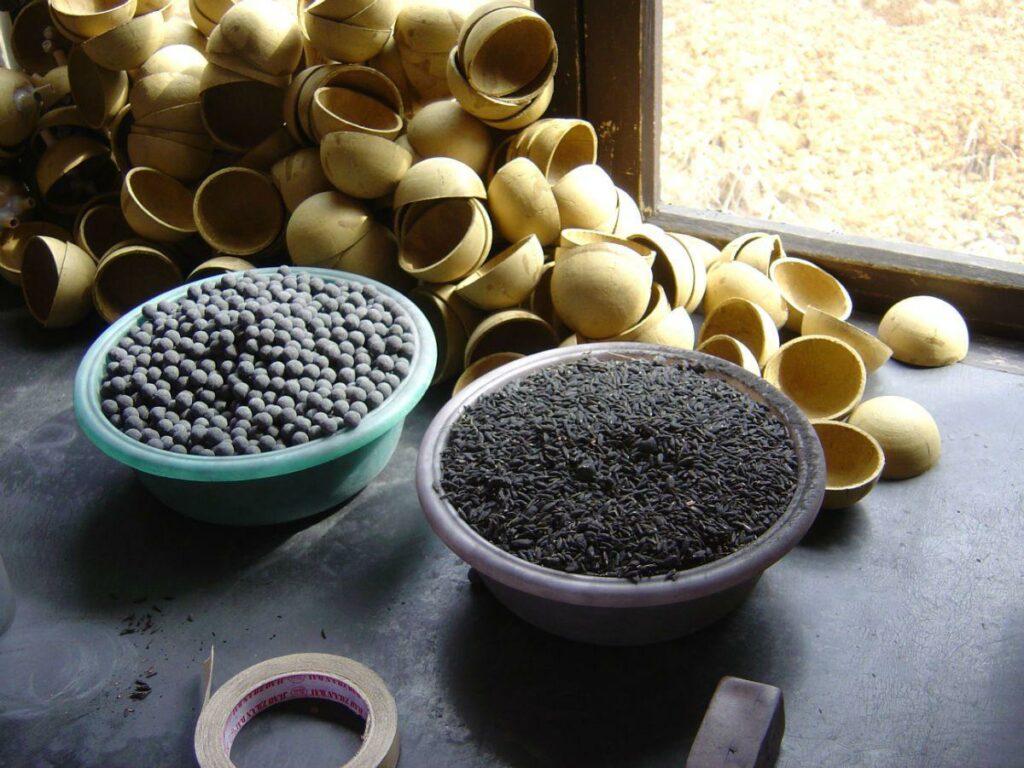The chemistry behind explosively beautiful fireworks
We’ve all seen fireworks displays, and many of us have even set off these popular pyrotechnics before. But have you ever wondered what makes them go bang, or how all of those colours, sparks and amazing effects are created? It’s all down to clever use of chemistry.
Early fireworks
The very first recorded use of fireworks was believed to have been in China and India, where fireworks were created using gunpowder or black powder. This highly explosive substance is created when potassium nitrate (also known as saltpeter) is mixed with sulphur and other organic fuels like charcoal. Gunpowder was mainly used by the military for weapons and explosions, but chemists soon found another use for it – fireworks.
For fireworks to work properly, they need to contain a number of things. One of these is an oxidising agent, for which potassium nitrate works perfectly. They also need fuel, and this need is met by the charcoal and sulphur.
Beautiful colours and astounding effects
There are also a few extra ingredients that go into making the fireworks that we know today. The first is crucial, as it creates the vivid colours we love in modern day fireworks. These stunning effects are created by metal oxides and metal salts, which act as colourants. When the firework explodes, it does so in an explosion of intense heat – which creates incandescent light. The temperature of fireworks can be controlled, so as to heat the metal oxides and salts so that they emit particular colours of light at just the right time.
Also in the mix are effects pellets, or globs of explosive material that when ignited, create the many breathtaking fireworks effects audiences love.
All of this is contained within a binding, with a fuse connected to a bursting charge which sets the whole thing off.
People have now been using fireworks for big celebrations for hundreds of years. This means that pyrotechnic chemists have had plenty of time to develop ever more creative, elaborate and spectacular effects through the combination of different chemicals.
How fireworks explode
What you see when fireworks fire into the sky and explode is actually a couple of different steps. The firework is placed in a tube (called a mortar) with a lifting charge containing black powder underneath. When this fuse is lit, the ignition of the black powder forces the firework skywards.
Immediately after, once the firework is airborne, a timed secondary charge goes off. This ignites the black powder within the firework itself, leading to an intense chemical reaction which releases the effects pellets with explosive force. This is the explosion you see when a firework goes off.
The timed secondary charge is a very important part of the firework, as it ensures that this violent explosion – exciting to watch as it may be – only happens when the firework is at a safe height away from spectators. It also fires the firework into the dark night sky, against which the lights and colours of this amazing chemical reaction can best be appreciated.

